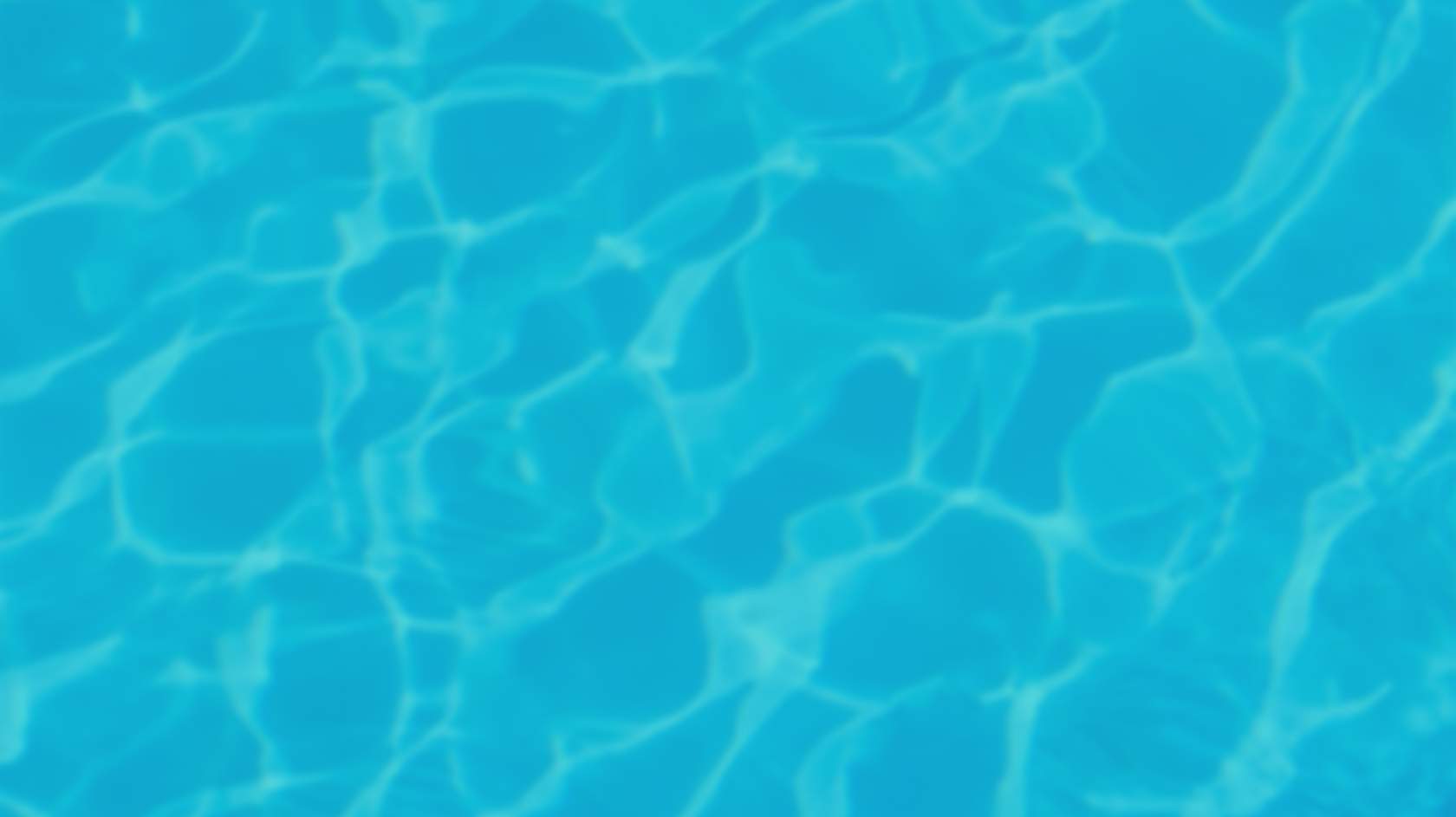

Getting to grips with pool industry jargon
Baffled by backwash? Confused by chloramines and clarifiers? Don't know your pH from your phosphate? It can feel like owning a pool comes with a whole new language, so we've created a guide to unravel the mysteries.
With any new hobby or pursuit, you're exposed to a world you never knew existed — often featuring its own exclusive language — and the pool industry is no exception. There are plenty of unfamiliar terms for the specialist equipment and chemicals you'll need to use and activities you'll undertake in order to keep your pool in tip top condition.
To make life simpler, we've compiled some of the more common terms and their definitions, so you'll be fluent in pool speak in no time!
Acid | Acid is used to lower the pH and/or Total Alkalinity in pool water. |
Algaecide | A chemical used to kill and prevent algae growth in pools. |
Ammonia | A chemical introduced to pool water by swimmers from organic matter like skin oils and hair. It forms Chloramines. |
Backwash | To pump water through the pool filter to remove dirt and other impurities |
Black spot algae | A common type of algae found in pools. Can be treated with an algaecide product. |
Bromine | A sanitising chemical typically used in heated indoor pools and spas. |
Buffer (sodium bicarbonate) | Buffers slow down the change of pH in pool water, making it easier to achieve the ideal level of between 80 and 120 ppm. |
Calcium chloride | A chemical that is added to pool water to increase calcium hardness levels. |
Calcium hardness | A measure of calcium levels in pool water. Calcium protects the pool surface and is part of a healthy water balance. |
Calcium hypochlorite | A common chlorine sanitiser product used in swimming pools. Granular form of chlorine. |
Cartridge | The removable part of a cartridge filter system, which is used to prevent particles from contaminating pool water. |
Cell | Part of a saltwater chlorinator system. The electrolytic cell converts chloride contained in saltwater into chlorine for use as a sanitiser. |
Cell cleaner | A chemical used to clean the scale from salt cells. It is usually phosphoric acid based. |
Chloramine | A chemical formed when chlorine and ammonia come together. It causes sore eyes, itches skin and can make pool water smell strongly of 'chlorine'. Chloramine can be removed using a superchlorination or 'shock treatment' process. |
Chlorine | A chemical used to sanitise pool water. Comes in liquid and granular forms. |
Chlorine remover (sodium thiosulphate) | A chemical used to remove excess chlorine from pool water. |
Citric acid | A chemical used to remove stains on pool surfaces |
Clarifier | A chemical used to clear up cloudy pool water |
Cyanuric acid | See 'Stabiliser' |
Eyeball | Also referred to as a 'nozzle' or 'return jet', eyeballs circulate water through the pool and return water after it passes through the filter. The direction can be adjusted. |
Filter aid | A powdered chemical that assists the filtration system to improve water cleanliness. |
Filter cleaner | A proprietary product used to clean filter cartridges and sand filters. |
Flocculent | A chemical used to clear very cloudy pool water. Available in both powder and liquid forms. |
Glass media | Type of filter material used to trap microscopic particles while still allowing water to pass through the filter. |
Granular chlorine | See 'Calcium hypochlorite' |
Green algae | The most common type of algae found in swimming pools. Can be treated with an algaecide product. |
Hardness increaser | See 'Calcium chloride' |
Heat pump | Pool water heating device that draws heat from the outside air. |
Instant pellets | A chemical used to boost chlorine levels and used for superchlorination. |
Ioniser | An electronic device used to purify pool water. An alternative to traditional sanitising methods. |
Leaf rake | Removes leaves from the bottom of a pool |
Leak sealer | A chemical used to stop leaks in swimming pools |
Liquid chlorine | A sanitising product |
Lithium hypochlorite | A sanitising product used in spas |
mg/litre | See 'ppm' |
Main drain | A relief valve located in the bottom of the pool |
Multiport valve | A valve on a media filter used to direct waterflow |
Mustard algae | A rare type of algae, not commonly found in pools |
O ring grease | A special waterproof silicone grease used on o rings found in pool equipment including filters and pumps. |
Once a week tablets | Slow dissolving sanitiser tablets used in a dispenser that floats on and slightly below the pool water surface. |
Ozoniser | An electronic device that makes ozone, which is used to purify pool water. An alternative to traditional sanitising methods. |
pH | A measure of acid or alkalinity in pool water. The ideal pH for swimming pools is 7.2 to 7.6. |
ppm | Parts per million. A measure of concentration. Also milligrams per litre or mg/litre. |
Phosphate | A mineral that feeds algae and allows it to grow. |
Phosphate remover | A chemical product that hinders algal growth by removing phosphates from the water. |
Polyhexanide | An organic chemical sanitiser |
Pool alarm | A device that sounds an alarm when a disturbance to the pool surface or water level is detected, such as when a child or pet enters the water unexpectedly. |
Pool cleaner | A suction, robotic or pressure operated device used to clean the pool floor, walls and surfaces. |
Pool cover | One of many different forms of pool water cover used to control heat loss and prevent debris from entering the water. May also be a safety cover to prevent accidental pool entry. |
Pressure gauge | Located on top of the pool filter, the pressure gauge indicates when it is time to clean the filter. |
Pump basket | A plastic basket located in the pump that collects leaves. |
Pump lid 'o' ring | A rubber ring located around the pump lid which needs regular greasing to prevent air leaks. |
Recirculate | A setting on a multiport valve that allows water to bypass the filter. |
Return (or jet return) | See 'Eyeball' |
Salt | A mineral used by a salt chlorinator to make chlorine. |
Salt chlorinator | An electronic device to make chlorine for sanitising from salt in the pool water. |
Salt level | The salt content of pool water, as needed by a salt chlorinator. |
Sand | Specially graded sand. A type of filter material used to trap microscopic particles while still allowing water to pass through the filter. |
Sanitiser | A chemical used to kill harmful bacteria in pool water. Commonly chlorine. |
Scale | A calcium carbonate (chalk) build-up found on salt chlorinator cells and swimming pool walls |
SDIC (stabilised chlorine) | A commonly used chlorine sanitiser product |
Skimmer basket | A plastic basket located in the skimmer box, used to collect leaves |
Skimmer box | A small opening built in the side of the pool where pool water is sucked in and cleaned and pushed back out to the pool. |
Skimmer sock | A socket put over the skimmer basket to remove fine particles |
Sodium bicarbonate | See 'Buffer' |
Sodium hypochlorite | See 'Liquid chlorine' |
Stabiliser (also sunscreen, cyanuric acid) | A chemical used to stop chlorine loss through exposure to sunlight. Available in liquid or granular forms. Ideal level is 30 to 50 ppm. |
Stain remover | A chemical used to remove stains (brown iron or manganese) from pool walls, floors and surfaces. |
Sunscreen | See 'Stabiliser' |
Telescopic pole | Extendable pole for attaching to pool cleaning accessories |
Test kit | A four-in-one water test: Chlorine, pH, Total Alkalinity and acid demand. |
Tile & vinyl cleaner | A chemical used to clean the water line of a pool |
Timeclock | A device used to regulate specific equipment and actions by time of day. Can be part of the salt chlorinator or used to regulate pump operation hours. |
Total Alkalinity | A measure of the amount of alkaline (see 'buffer') in the water. The ideal level is 80 1o 120ppm. |
Vac head | Used to clean the floor of a pool and attached to the telescopic pole. Features wheels for use with concrete pools or brushes for fibreglass, vinyl and painted pool surfaces. |
Vac hose | Flexible hose used for vacuuming the pool |
Vac plate | A plastic disc connected to the vac hose and placed in the skimmer box when vacuuming. |
Vacuuming | Cleaning the pool by sucking dirt and debris into the filter. |
Waste | A setting on a multiport valve that allows water to go down the drain. |
Water balance | The use of chemicals to balance water ensures it is safe to swim, while protecting pool surfaces and fittings. |
Water flow control valve | Valve used to control the suction and speed of a cleaner |
Weir door | The door to the skimmer box which floats virtually when the pump is off, preventing leaves from floating back into the pool. |
Winterise | The act of preparing a pool for the winter season, when the pool is not in use. |
Zeolite | A specific type of media used in a sand filter. A type of filter material used to trap microscopic particles while still allowing water to pass through the filter. |
This is by no means the definitive list of pool industry terminology, but it's certainly a great starting point for anyone new to the game. We consider it to be a continually evolving list and make regular updates on the poolspalife.com website. Check out the Pool & Spa Terminology page for more info, or drop us a line with suggestions you'd like to see included. Email us at [email protected].
